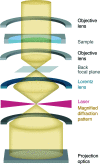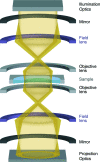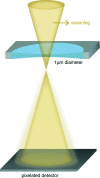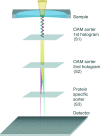Single-particle cryo-EM: alternative schemes to improve dose efficiency
- PMID: 34475283
- PMCID: PMC8415325
- DOI: 10.1107/S1600577521007931
Single-particle cryo-EM: alternative schemes to improve dose efficiency
Abstract
Imaging of biomolecules by ionizing radiation, such as electrons, causes radiation damage which introduces structural and compositional changes of the specimen. The total number of high-energy electrons per surface area that can be used for imaging in cryogenic electron microscopy (cryo-EM) is severely restricted due to radiation damage, resulting in low signal-to-noise ratios (SNR). High resolution details are dampened by the transfer function of the microscope and detector, and are the first to be lost as radiation damage alters the individual molecules which are presumed to be identical during averaging. As a consequence, radiation damage puts a limit on the particle size and sample heterogeneity with which electron microscopy (EM) can deal. Since a transmission EM (TEM) image is formed from the scattering process of the electron by the specimen interaction potential, radiation damage is inevitable. However, we can aim to maximize the information transfer for a given dose and increase the SNR by finding alternatives to the conventional phase-contrast cryo-EM techniques. Here some alternative transmission electron microscopy techniques are reviewed, including phase plate, multi-pass transmission electron microscopy, off-axis holography, ptychography and a quantum sorter. Their prospects for providing more or complementary structural information within the limited lifetime of the sample are discussed.
Keywords: holography; multi-pass TEM; phase plate; ptychography; quantum sorter.
open access.
Figures







References
-
- Allars, F., Lu, P.-H., Kruth, M., Dunin-Borkowski, R. E., Rodenburg, J. M. & Maiden, A. M. (2021). Ultramicroscopy, https://doi.org/10.1016/j.ultramic.2021.113257. - PubMed
-
- Aoyama, K. & Ru, Q. (1996). J. Microsc. 182, 177–185. - PubMed
-
- Arnaud, J. A. (1969). Appl. Opt. 8, 189. - PubMed
-
- Badde, H. G. & Beimer, L. (1970). Z. Naturforsch. A, 25, 760–765.
MeSH terms
Substances
Grants and funding
LinkOut - more resources
Full Text Sources
Research Materials

